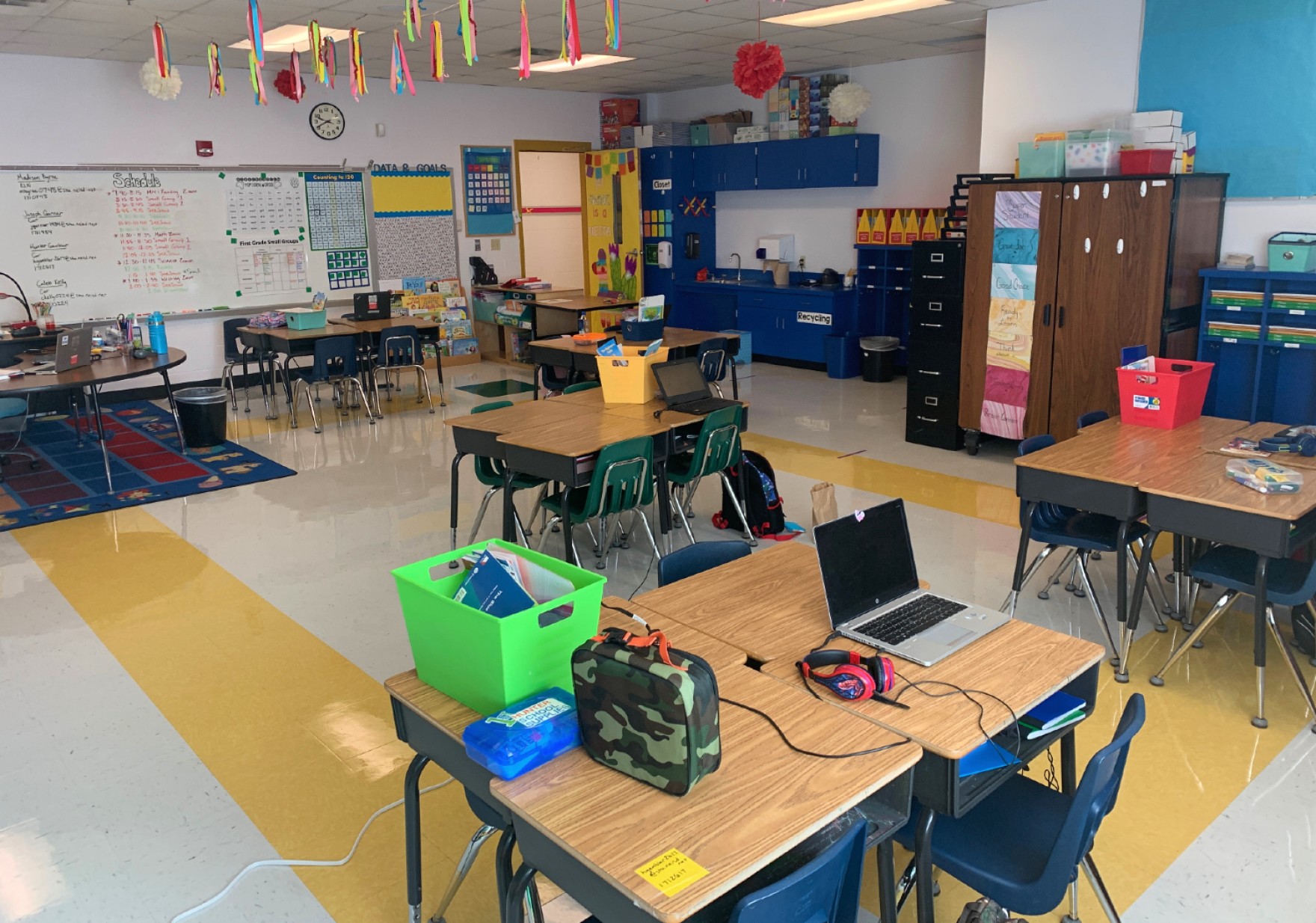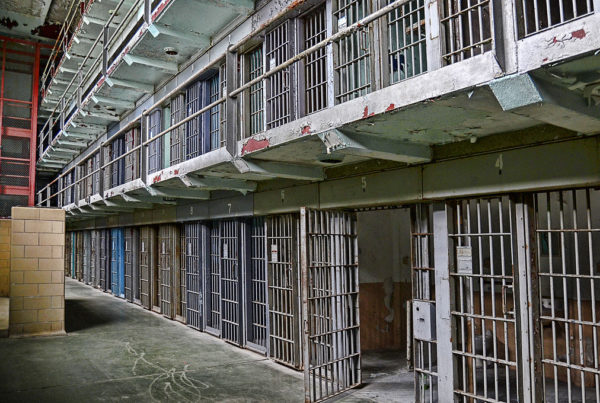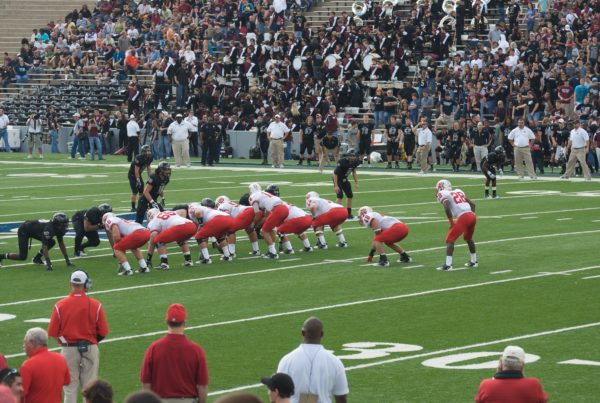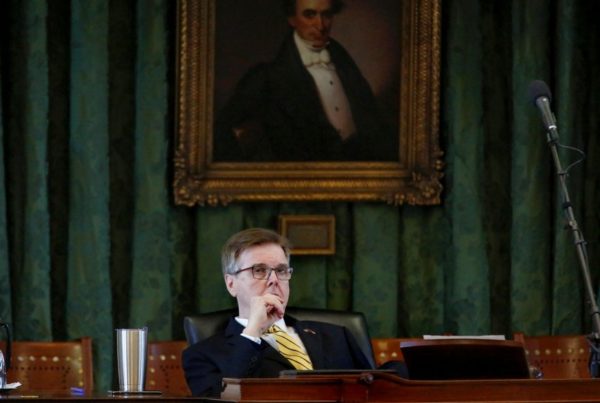From Texas Public Radio:
With schools across the state now open to in-person instruction, many Texas teachers are simultaneously teaching students in the classroom and at home.
Almost all of the teachers in the Northside Independent School District in San Antonio have both in-person and remote students.
Stephanie, a Northside preschool teacher who asked that TPR only use her first name, said the dual modes of instruction are putting a strain on teachers, especially early childhood educators like her.
“Maybe this works for high school, maybe it works for middle school, for upper elementary. This doesn’t work for early childhood,” Stephanie said.
She starts class each day with a morning meeting. They sing a song and talk about the day’s schedule while she moves around the room and gets her seven in-person students off their feet to do jumping jacks.
She drags a cart on wheels around with her with an iPad on a tripod placed on top so she can live stream and record the meeting for her 11 remote students.
“A lot of what I do is movement based in order to keep 4- and 5-year-olds’ attention,” said Stephanie.
But after the morning meeting, Stephanie said it’s difficult to keep track of both groups of students. Many activities require supplies and support students may not have at home, and she can’t monitor her in-person students’ progress when she’s talking to remote learners.
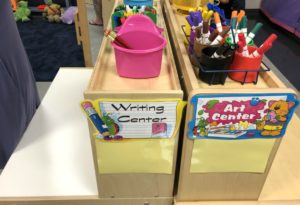 “I tried to give them all the same effort and the same attention, and I can’t,” Stephanie said. “I’m having to choose between my in-person kids or my virtual kids.”
“I tried to give them all the same effort and the same attention, and I can’t,” Stephanie said. “I’m having to choose between my in-person kids or my virtual kids.”
Northside is San Antonio’s largest school district, with more than 100,000 students. Superintendent Brian Woods said he originally wanted to assign some teachers to be in-person and others to be remote.
“We knew this was going to be an issue way back in April, and so we thought for a long time about ‘How do we prevent that from happening?’ knowing that it would be a challenge,” said Woods.
However, Woods said the district realized that they wouldn’t be able split up teacher responsibilities without changing students’ teachers after the district started phasing in a return to the classroom.
“We really thought that would be detrimental to the student,” said Woods. “And we heard from a number of teachers who said, ‘I don’t want kids moving in and out of the class all the time. I want to know them well, and I want to understand their needs.’ And that makes good sense.”
Woods said there’s “some legitimacy” to concerns that teachers can’t give students their best when their attention is divided, but added that he’s not sure that concerns other priorities.
“We’re all in a situation here where we’re choosing between a series of options, all of which are bad,” Woods said. “It’s a matter of finding the least bad option.”
Stephanie is one of several teachers who told TPR the added workload caused by the pandemic is leaving them stressed out and stretched thin.
“I don’t think it’s healthy or normal for me to cry on my way to work, and to cry on my way home from work, and to dread going into work at a job that I used to love,” Stephanie said.
She said she’s lost the energy or motivation to do the things she used to do for fun. She also started seeing a therapist.
“Honestly, I don’t see a way out, and I don’t ever want to get to the place where nothing has changed and I have to decide whether my mental and physical health is worth this job,” said Stephanie.
That stress has already caused some teachers to leave, according to Chris Contreras, who teaches special education at a Northside middle school. Contreras said three of his colleagues have already left since the start of the school year.
“Just decided to call it quits. Young and old. We’ve had many teachers who expressed this is their last year,” said Contreras.

Camille Phillips / Texas Public Radio
He compares teaching right now to trying to cook three meals at once, one for students who are in the classroom, another or students who are watching live from home and a third for students who log in later in the day to watch the lesson and complete the work.
“It’s extremely time consuming to make sure that we prepare those three lessons,” Contreras said. “Of course, with special education, you have to have different types of combinations, modifications for each type of student as well.”
Contreras said teaching both in-person and remote students simultaneously isn’t sustainable, but he’s not sure what the solution is.
“I would guess have all the students come back; that would be the best thing. Have everyone come back, but have the testing in place, have the PPE in place, have the safeguards in place,” said Contreras, who has seen an improvement in his students learning since they’ve returned to the classroom.
Northside ISD Superintendent Brian Woods said he’d also like to have more students return to school, because many of them are struggling to learn remotely. But the coronavirus pandemic is far from over, and he’s promised parents they can choose to keep their children in a remote setting all year. About 60% of the district’s students are currently learning from home.
“The districts that have kind of done away with their remote program are in much more rural areas that haven’t seen the impacts of COVID like we have,” said Woods.
Woods said he’s also worried that he might lose teachers this year.
“Anybody who’s undergoing a complete change in what they do for a living is going to feel pretty tired and burned out,” Woods said. “I know I certainly do.”
North East, SAISD
District officials and union leaders at North East and San Antonio ISD said most teachers in their districts also were responsible for both in-person and remote learners.
However, North East ISD opted to assign some elementary students to different teachers in October so that most elementary teachers would be able to dedicate their time to one mode of instruction.
“Over the summer, and then into this fall, I held teacher listening sessions. And during those times, what we heard is that teachers struggled with doing both,” said North East Superintendent Sean Maika. “And so we went in with that philosophy of trying to get them to teach (one or the other).”
Once North East opened its schools to everyone who wanted to learn in person, Maika said the district reassigned many of the elementary students who remained virtual to new teachers.
“We were able to do that at the elementary level pretty successfully, but even there, we had teachers that did not want to just do one. They had already formed bonds with their kids, and so they wanted to continue to do both,” Maika said. “Once we hit (middle school and high school), though, it became a little more challenging because of the specialty classes and certifications that are necessary at that level.”
About 58% of North East teachers, most in middle school and high school, still teach students at home and in class simultaneously.


